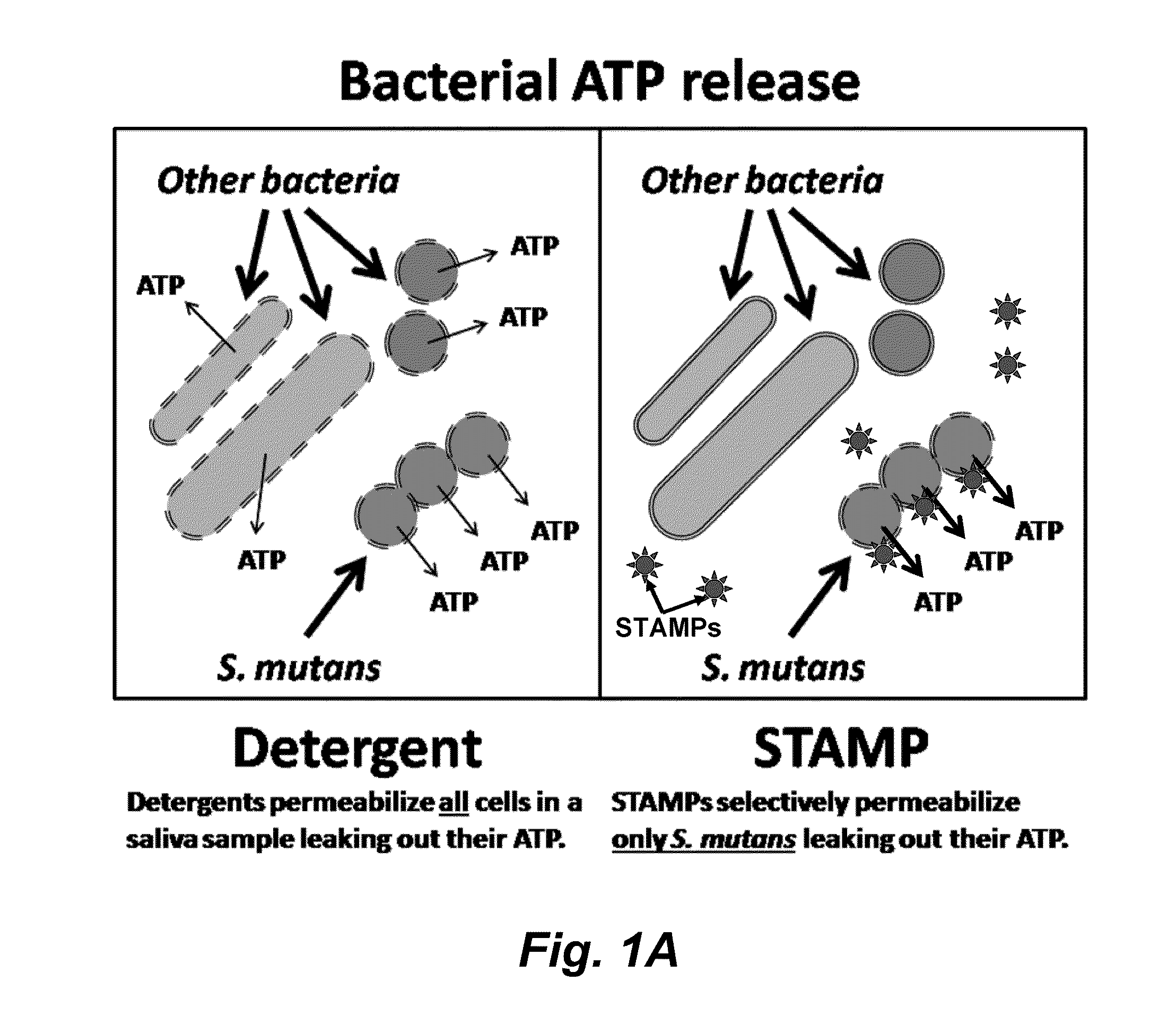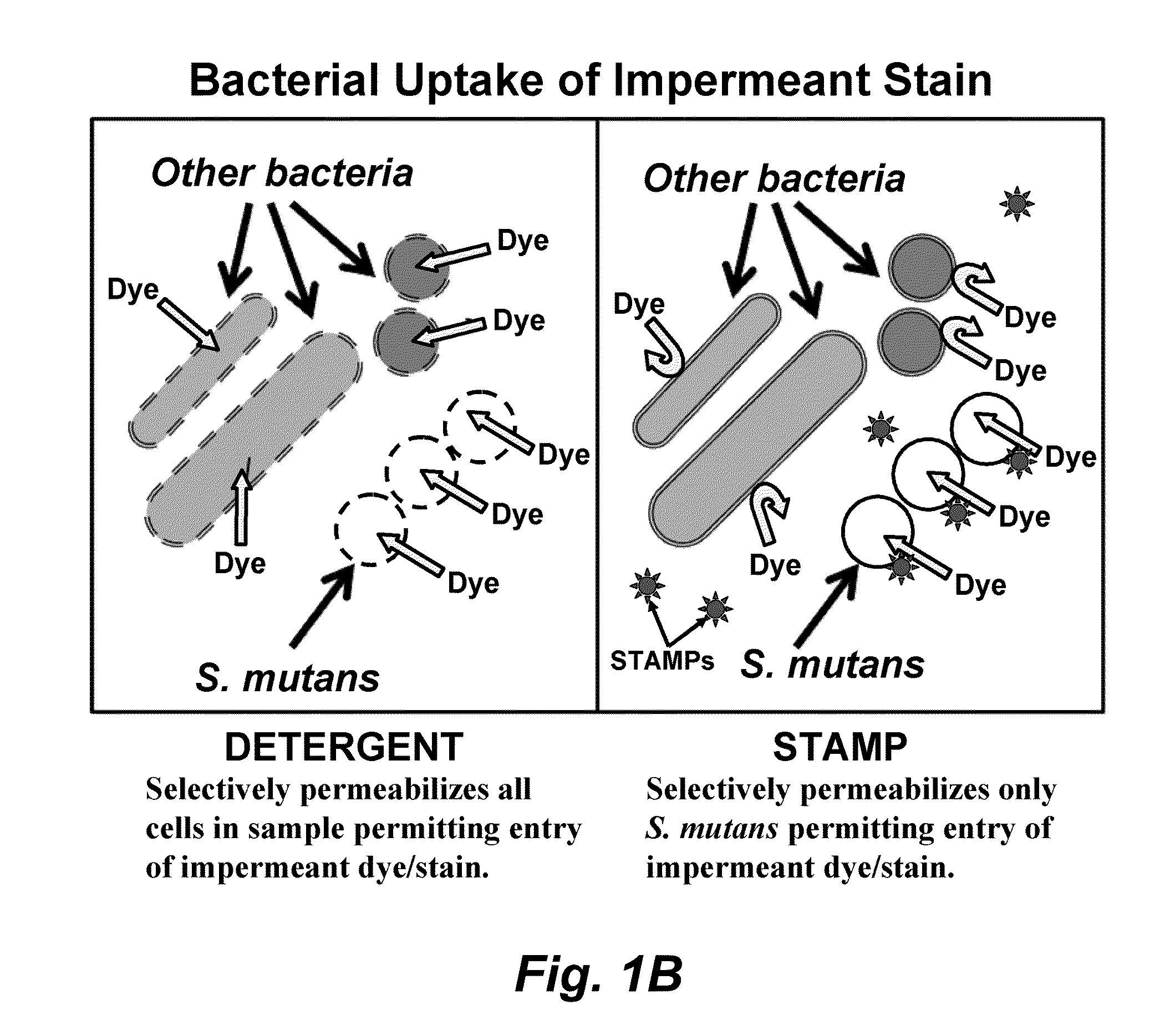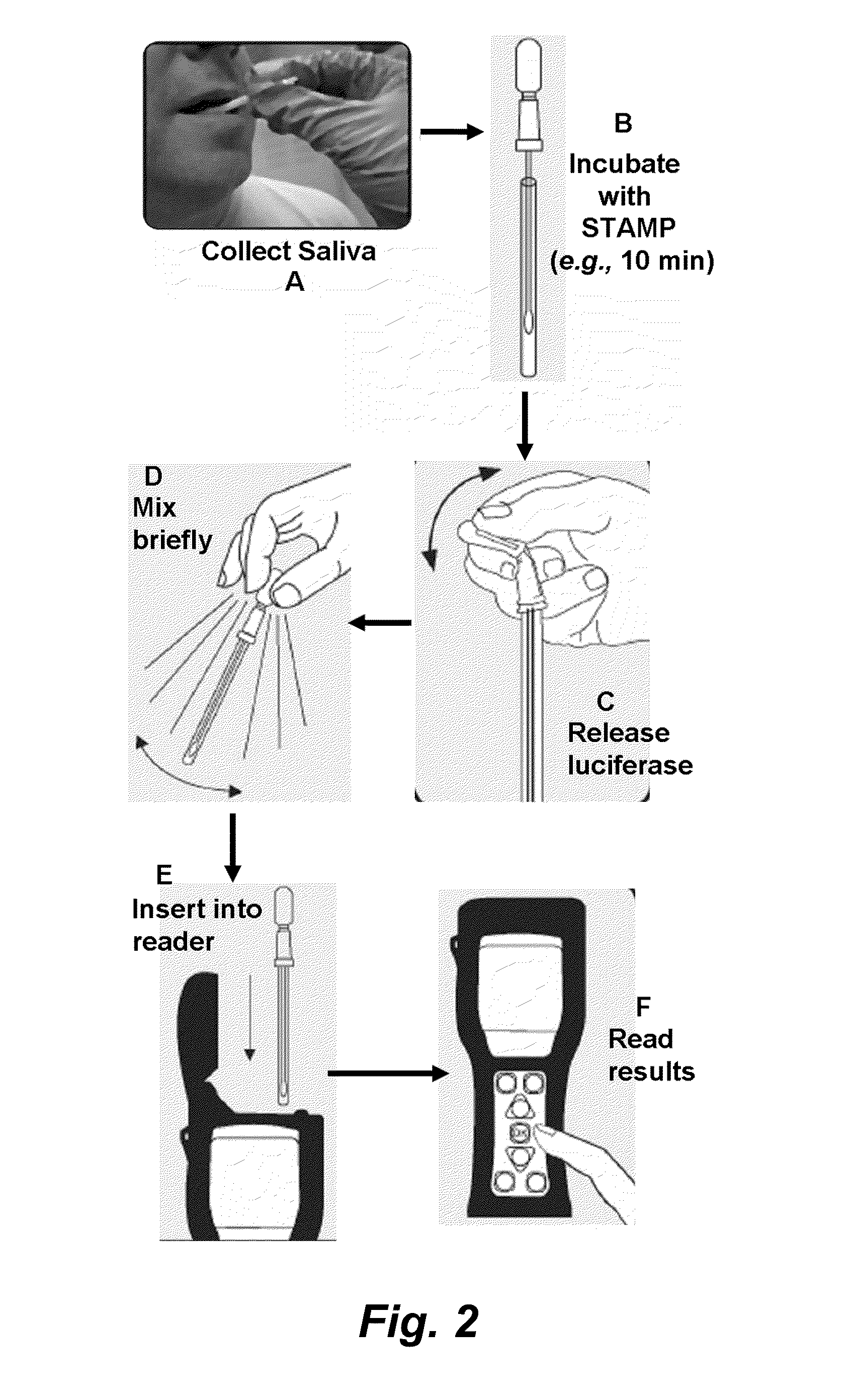Methods and devices for the selective detection of microorganisms
a selective detection and microorganism technology, applied in the field of assays and diagnostics, can solve the problems of affecting the success of classical microbiological methods, and millions of hospitalizations and thousands of deaths each year, so as to increase the permeability of the membrane and reduce the
- Summary
- Abstract
- Description
- Claims
- Application Information
AI Technical Summary
Benefits of technology
Problems solved by technology
Method used
Image
Examples
example 1
Detection ofS. Mutans Using the Selective Permeability Reagent C16G2 Stamp
[0125]A first experiment was performed to determine the detection level of the assay. S. mutans was grown overnight in media and serially diluted to known concentrations in growth media. A 250 μl aliquot of each dilution was mixed with the STAMP (C16G2, SEQ ID NO:1111) and incubated for 10 minutes at room temperature. After incubation the luciferase reagent was added to the dilution, mixed briefly and luminescence measured. The control sample was fresh growth media. As shown in FIG. 3 the assay is capable of quantitatively detecting as little as 104 cells / ml of cultured S. mutans grown in the lab. STAMP utilized, C 16G2.
[0126]The ability of the assay to detect S. mutans in an unstimulated saliva sample was then determined. The saliva sample came from a volunteer who demonstrated low background levels of native S. mutans. S. mutans was grown overnight in media and serially diluted to known concentrations in the...
PUM
| Property | Measurement | Unit |
|---|---|---|
| strength | aaaaa | aaaaa |
| luminescence | aaaaa | aaaaa |
| electrochemical | aaaaa | aaaaa |
Abstract
Description
Claims
Application Information
 Login to View More
Login to View More - R&D
- Intellectual Property
- Life Sciences
- Materials
- Tech Scout
- Unparalleled Data Quality
- Higher Quality Content
- 60% Fewer Hallucinations
Browse by: Latest US Patents, China's latest patents, Technical Efficacy Thesaurus, Application Domain, Technology Topic, Popular Technical Reports.
© 2025 PatSnap. All rights reserved.Legal|Privacy policy|Modern Slavery Act Transparency Statement|Sitemap|About US| Contact US: help@patsnap.com



